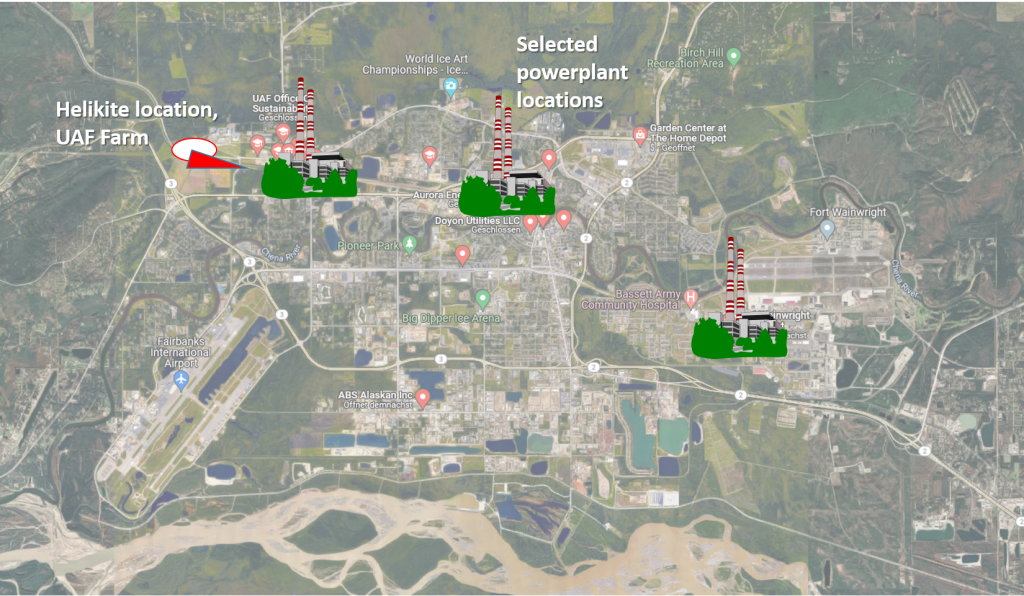Credit: Roman Pohorsky, Fairbanks, Alaska
Alaskan Layered Pollution and Chemical Analysis (ALPACA)
Start: 2021 – ongoing
Scope of Project:
The project seeks to close knowledge gaps in understanding of atmospheric chemical mechanisms occurring under cold and dark conditions, particularly in Arctic urban environments. These gaps are exacerbated by lack of knowledge of emissions and by wintertime meteorology, which causes stagnation and hinders mixing between cleaner background and polluted air masses. In addition, there are limited measurements in regions with sub-freezing temperatures and low to absent photochemistry.
Measurements are carried out in a field campaign in January – February 2022 in Fairbanks, Alaska, with partners from the US and Europe.
Understanding the vertical extent of air pollution
The wintertime boundary layer in Fairbanks is highly stratified due to strong surface inversions. From an air quality perspective, this means that concentrations are particularly elevated near the ground. However, it is not clear yet, which emissions source contribute to the near-surface pollution. For example, power plants have high stacks, which might emit above the inversion layer. To identify different vertical layers of pollution and to determine their origin, we carry out measurements with the helikite system (MoMuCAMS). See below table for an overview of the instrumentation.
| Instrument | Measured variable |
| Portable Optical Particle Spectrometer | particle size distribution (150 – 3000 nm) |
| Single Channel Tricolor Absorption Photometer | absorption at 450, 525 and 624 nm |
| Condensation particle counter | aerosol number concentration > 7 nm |
| miniaturized Scanning Electrical Mobility Sizer | particle size distribution 7 – 300 nm |
| 8-channel filter sampler | for SEM-EDX analyses |
| 6-stage filter sampler | for major ion and trace metal analyses |
| CO2 monitor | CO2 mixing ratios |
| ozone monitor | ozone mixing ratios |
| Mira PICO | water vapor, CO and N2O mixing ratios |
| Smart Tether | RH, T, wind velocity and direction |
A similar suite of instruments is operated on the ground for reference measurements.
For more information see: https://alpaca.community.uaf.edu/
Contact: Roman Pohorsky
